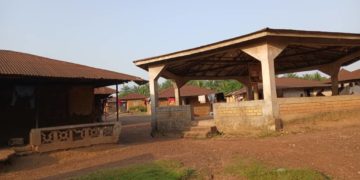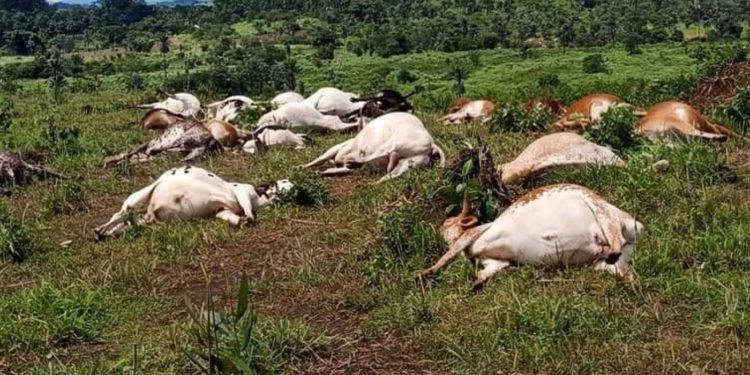Laboratory examinations and analyses have ruled out infectious disease as cause of the mass deaths of cattle in Liberia earlier this month, the government has said.
Some 36 cattle in the same field were found dead on July 6 in Kelima Bendu, a town in Foyah District, Lofa County in the Northwestern part of the country.
The Ministry of Agriculture (MOA) of Liberia said on Wednesday that investigators had looked particularly for Anthrax and brucellosis, two diseases that are transmissible from animals to humans, which typically affects cows, sheep, and goats. It said the team of animal health technicians, working under the coordinated inter-governmental ONE HEALTH PLATFORM, found that there was no indication of the involvement of any of the infectious diseases.
The investigation team comprised the MOA’s health technicians and counterparts from the Ministry of Health, National Public Health Institute, and the Environmental Protection Agency. They were joined by the Joint Security and the Ministry of Internal Affairs, with technical support from the World Bank Regional Disease Surveillance and Enhancement Project, United Nations Food and Agriculture Organization (FAO) and the World Health Organization (WHO).
The area where the incident occurred is located close to the borders with Liberia’s neighbours Guinea and Sierra Leone.
On Monday, the Sierra Leone government imposed a temporary ban on movement of cattle, sheep and goats between its border with Liberia pending the outcome of the investigations.
According to the Liberian authorities, only three of the animals in the field survived. Blood and tissue samples were taken from both the live animals and the dead ones, and soil samples from the grazing area were also collected, examined and analyzed at the MOA’s Central Veterinary Diagnostic Laboratory, the Ministry said, adding that water samples from nearby streams were also analyzed.
“All tests conducted on samples collected came negative for anthrax, brucellosis, showing no traces of pesticide residues; all other water parameters were within permissible levels,” the statement said.
The ministry said the animals may have died as a result of lightening.
“The cattle death is attributed to severe lightning strikes which residents in the town confirmed occurrence [of] the night before the cattle were discovered dead in the morning,” the statement said.
Nonetheless, the authorities warned citizens to remain cautious and to avoid contact with sick or dead animals and their products, among other potential sources of diseases.






















